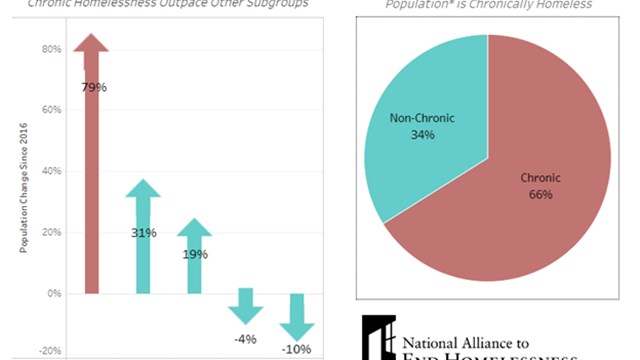If Manhattan is the black-Amex-carrying Wall Streeter of the New York City real estate scene and Brooklyn is the too-hip-to-care rock star, then Queens is the hardworking third sibling, eschewing the spotlight while slowly-but-surely amassing both a fortune and a loyal following. For years now, Brooklyn and Manhattan have dominated the New York co-op and condo market, but now the borough to the east is making waves, building its own housing momentum and creating an appealing alternative for those in search of an affordable, safe and welcoming place to call home.
Why Queens?
The largest of New York’s five boroughs, Queens boasts a growing population of more than 2.2 million people. Developers have looked at those expanding numbers and launched an enormous number of new development projects, both high-profile and more affordable. This current spate of building is seen in part as a rebound from the stagnant days of the 1970s and 1980s when crime posed a problem, slowing the influx of new residents into the community.
Today, New Yorkers have developed a renewed interest in the borough, an interest inspired by Queens’ unbeatable amalgam of qualities, from location to price. “The number-one reason for the popularity of Queens is price,” says Norman Ellis, president of Ellis Group Ltd., a real estate mortgage company based in Bayside. “Whereas in Manhattan, a million dollars will buy you a high-end one-bedroom condo, in Queens it will get you a beautiful four- or five-bedroom home.”
The variety of properties available also draws buyers. “You can still get one-acre pieces of waterfront property in Queens,” Ellis says. Throughout the borough, potential homeowners will find a full range of dwellings, from three story walk-ups to new co-op and condo developments to single family homes, beach homes, garden apartments and much more—all for less money than the average Manhattan or even Brooklyn property.
“Queens is a great place,” says Tony Avella, a city councilman from Bayside. “It’s like living in suburbia. There’s good schools, access to parks, nice streets. People can live a quiet lifestyle, but still be in New York City.”
That ease of access to Manhattan certainly ranks high on the list of Queens’ desirable qualities. “At least half of Queens is well-served by the subway and express buses,” says Ellis. “Even eastern Queens has the Long Island Railroad, which can get you to Penn Station in 25 minutes.”
Better yet, Queens offers its own brand of good living, with exceptional nightlife, dining, museums, theatres and every other amenity associated with a flourishing community. So, while the lights of Manhattan are easily accessible, residents can take pride in the fact that they don’t have to stray out of their county lines to enjoy a great night out.
Beyond the social scene, Queens retains its reputation as a stable community for families. With a number of very good public school districts, tree-lined streets, parks, and tight-knit neighborhoods, it’s a safe place to raise a family.
Each neighborhood, too, has its own distinct personality, one that its residents quickly take on and wear with pride. From Howard Beach, Middle Village, Astoria and Long Island City to Flushing, Forest Hills, Kew Gardens, Bayside and Ozone Park, the neighborhoods of Queens are filled with a diverse mix of individuals and families, people of all income levels, professions, education and ethnic background.
A vast wealth of lifestyles and traditions merge and mingle in Queens, creating a rich tapestry of experience for the people who call it these neighborhoods home. When people talk about where they’re from, Avella says, “They associate themselves not necessarily with the borough of Queens, but with their neighborhood.” That strong, closely held identity is another selling point for many in search of a new home.
Taken all together, this powerful mix of reasonable prices, excellent location and solid community has become almost irresistible to co-op and condo buyers in search of good value for their money.
On the Rise
As new residents come to Queens in search of home and hearth, a large number of new housing developments are springing to life. The largest and best known of these developments if Queens West, a 74-acre waterfront development in Long Island City, directly across from midtown Manhattan. Already underway, when this project is completed it will consist of three distinct neighborhoods built in four development stages. At least 15 residential buildings will be erected in the coming years, as well as a commercial core of four buildings offering more than two million square feet of office space, retail facilities and services. Developers are touting Queens West as New York’s largest mixed-use development project in years. “It’s been slow going for Queens West, but it’s an enormous project,” Ellis says. “You’re creating entire new neighborhoods out of nothing.”
Another of the massive new developments going up in along the waterfront in Queens is the 900-unit East River Tennis Club and Condo Towers, which broke ground last fall. According to Andrew Gerringer of Prudential Douglas Elliman Marketing Group, who is handling the promotion and sales for the project, “There’s demand for new development in Queens. It’s a value—right now, the boroughs are still an affordable alternative to Manhattan.”
Of the new condo towers, Gerringer says “There are two towers on the water with four buildings—three flanking either side—so the development will consist of a total of eight buildings; three on each side of the towers going back from the water towards Vernon Boulevard.”
Other notable new projects in Queens include Silvercup Studios West in Long Island City. This two million square-foot project south of the Queensboro Bridge will consist of 1,000 residential units as well as office, cultural and retail space and a production studio. The building should have a stylish look and feel to it, given that its designer is Lord Richard Rogers, architect for the Centre Pompidou in Paris. Silvercup Studios West is slated for completion in 2009.
In Flushing, six condo and rental buildings will offer 1,000 new units, hand in hand with retail space and a riverfront walk along the Flushing River. Located at the corner of College Point Boulevard and Roosevelt Avenue, this project should open in 2008.
Kew Gardens is also seeing the renovation of more than 400 co-op units in an existing building on 72nd Road. These one-bedroom co-ops will range in price from $99,000 to $200,000, providing a reasonably priced housing solution for homebuyers watching their pennies.
Ellis sees developments such as these as a natural part of the real estate cycle. “You have development, maturity, decline and then the end of an area,” he says. Queens has already been through this cycle, and is gearing up for a new one, beginning “a re-use and development phase.” Over the last century, this was a major manufacturing area. “Now they’re building retail and residential. It’s a prototypical real estate cycle.”
All the new development is the logical next step in the borough’s process of urban evolution, says Charles Singer, director of market research for Rockrose Development Corporation, the development company behind the Queens West projects.
“Consider Long Island City, for example,” says Singer. “It has a separate identity from the rest of Queens because it’s traditionally been an industrial area. Since the 1970s, it’s attracted artists seeking large spaces at low rents—and the artists begat new restaurants and clubs in the neighborhood. That brought a whole new synergy similar to what happened in areas of Manhattan years ago. Long Island City is right across the creek from Williamsburg, Brooklyn, and there’s a similar culture evolving there.”
Steady as She Goes
With so much growth happening so quickly, it’s natural for many areas of Queens to face some growing pains. That’s been one of the prime concerns of Councilman Avella. “Queens has seen a tremendous amount of development,” he says. I equate it to putting 10 pounds of potatoes into a five-pound bag. Neighborhoods sometimes have trouble handling so much development. It overruns schools, resources and infrastructure.”
To that end, Avella and others have been pushing for closer scrutiny of the borough’s zoning codes to ensure both a steadier level of growth and also the preservation of the initial character of each neighborhood. “It’s like a puzzle,” Avella says. “You want to make sure you have all the pieces in the right place.”
Avella says he would like the community to have more of a voice in the development going on, and prevent growth simply for profit’s sake. With the influx of developers and other investors looking to make a fast dollar, Avella believes that concerns about building safety and illegal construction have become a valid worry. “Illegal construction can be very dangerous,” he says. “There are people building who have no business building.”
By promoting more community involvement in the development of new housing ventures, Avella hopes that the integrity of the very distinctive neighborhoods in Queens will remain. People often choose Queens as a place to live because of the rich and varied personalities held by each community. Rapid development might upset that balance. “It could destroy the very things that attracted residents to these neighborhoods in the first place,” Avella says. Ultimately, he adds, “My hope is that we will have a more stable development picture. I want it to be an asset and not a detriment.”
Different areas of Queens are in different stages of this cycle. The turn-around in Flushing, for example, is moving quickly. “In the 1980s, Flushing was a crime-ridden, under populated area,” Ellis says. “Now it’s become the new Chinatown. It’s huge, expanding and bustling. It’s an absolute, total turnaround.”
Get In on the Action
With developments springing up like dandelions all over the Queens landscape, co-op and condo buyers have a whole new real estate tableau to explore. It will be difficult to turn away from low prices, good neighborhoods, beachside property, waterfront views, solid school systems and the myriad other positives offered by this growing, vibrant borough. For those looking for a home with proximity to the big city without losing any of the neighborhood charm so many city-dwellers crave, Queens has a lot to offer.
Liz Lent is a freelance writer and a frequent contributor to The Cooperator.






Leave a Comment